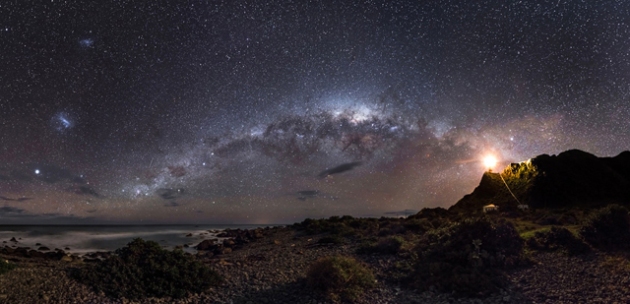Looks like a psicodelic painting, but it is the winner picture of the Astronomy Photographer of the Year, a competition promoted by the Royal Observatory Greenwich.
The shot was taken by the Australian amateur astronomer Mark Gee. It shows the Milk Way above the Cape Palliser on the North Island of New Zealand. The brightest light in the right of the image is from the Cape Palliser Lighthouse. The central patch of light in the sky marks the bulge of stars at the heart of our Galaxy, 26,000 light years away. To the left, the re the two Magellanic Clouds, small satellite galaxies much further away. Gee composed this panoramic image by puting together 20 individual pictures.
Gee was the winner both in his category, Earth and Space, and the competition’s overall winner. See the winners of the other categories bellow:
Our Solar System
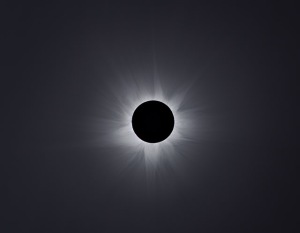
Australian Totality by Man-To Hui (China)
The pic shows the last total solar eclipse in Australia. The light is the outer atmosphere of the Sun – the corona. To achieve this result the photographer took two months processing images.
Deep Space
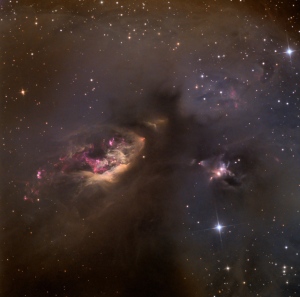
Celestial Impasto by Adam Block (USA)
Taken with a telecospe, after 15 hours of exposion, this image shows stars in a nebula.
Young astronomy photographer
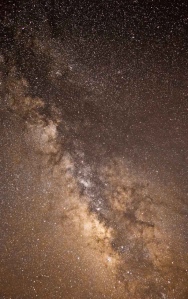
The Milky Way Galaxy by Jacob Marchio (USA), aged 14
Looks like a painting, but the pic shows the cumulative glow of tens of billions of stars.
People and Space
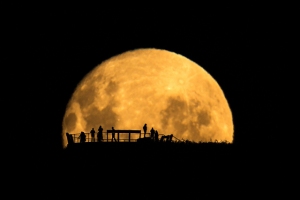
Moon Silhouettes by Mark Gee (Australia)
And here comes Mark Gee again with a simple but amazing shot of figures silhouetted against a rising Moon.
Best Newcomer

Venus transit by sam Cornwell (UK)
This category includes photos by people who have taken up the hobby in the last year. You have to play atention to see this pic. It shows the final moments of the transit of Venus, one of the astronomical highlights of 2012. The small dot on the right, in front of the Moon, is the planet.
Robotic Scope
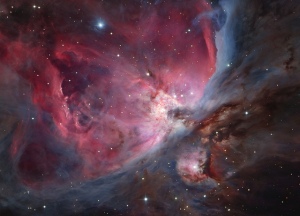
The Trapezium Cluster and Surrounding Nebulae by László Francsics (Hungary)
Taken with the use of the Robotic telescope at Siding Spring Observatory, this picture show the great Orion Nebula, often described as a ‘stellar nursery’ because of the huge number of stars which are being created within its clouds of dust and glowing gas.
If you read all the post until here there is a great chance that you take astronomy pictures yourself or, at least, would like to try. So here you find tips (video and PDFs) to improve your shots.
